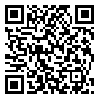BibTeX | RIS | EndNote | Medlars | ProCite | Reference Manager | RefWorks
Send citation to:
URL: http://sbrh.ssu.ac.ir/article-1-26-en.html
Background: Drug addiction is a social problem, which, until recently, was considered specifically for men; however, drug addiction also affects women. The aim of this study was to identify the backgrounds for addiction in women and how they deal with it.
Methods: This research was conducted using qualitative research through interviews. For this purpose, 51 addicted women, from two rehabilitation centers in Yazd, were selected through purposeful sampling and semi-structured interviews, and the resultant observations were used for data collection. Data from the interviews were analysed using coding theory.
Results: In the open coding Step 53, concepts were collected that were combined in the form of five major issues. Results show that the
family condition is the most important factor that results in addiction among women. Friendly interactions and weaknesses in life skills are
the conditions that lead to drug use among women. Breaking down of
social relationships and job deviations are the consequences of addiction in women.
Conclusion: woman drug use mostly affected by intimate relationships in family and friends. Social care systems should be developed for families with drug use persons to preventing family member’s involvement healthy lifestyle in Patients with type 2 diabetes. It was concluded that decrease in HbA1c level needs longer intervention period; more than three months.
Received: 2017/03/15 | Accepted: 2017/04/10 | Published: 2017/05/22
| Rights and permissions | |
 |
This work is licensed under a Creative Commons Attribution-NonCommercial 4.0 International License. |






